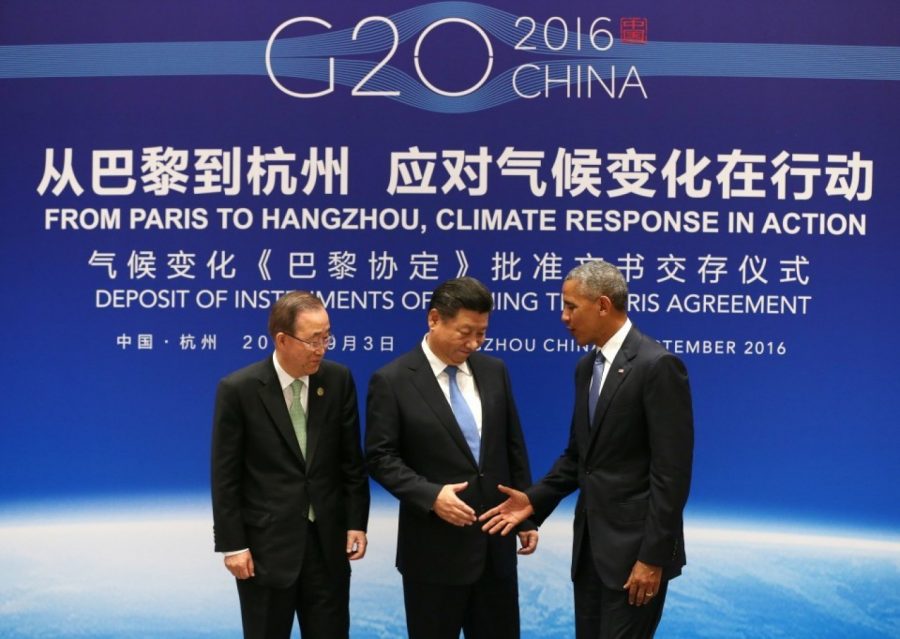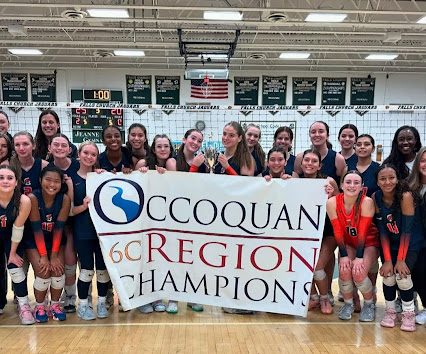U.S. joins Paris Climate Accords
October 11, 2016
The U.S. and China are gearing up to combat climate change. The two countries have recently joined the Paris Climate Accords, an international agreement aimed at reducing carbon emissions.
The Paris Climate Accords were drafted in 2015 and are open for ratification in 195 countries. If the agreement gains the 55% ratification necessary for implementation, meaning 55% of the world’s greenhouse gas emitters must join to make the accords effective.
“They’ve tried for many years to pass a climate accords, so it is historic for an environmental agreement,” said AP Government teacher Elizabeth Jackson.
It’s monumental for two of the largest carbon emitters, The U.S. and China, to enter the deal. Together, the two countries account for 40% of the world’s carbon emissions. Joining alongside each other shows initiative and comes as surprise to many. China’s ratification contains a surprise factor due to their track record of not cooperating with similar agreements in the past. Meanwhile, the U.S.’ president’s ratification came without presenting the treaty to congress, where it would have likely died due to strong Republican dislike.
Many are concerned of whether the accords will actually achieve their goal. A primary reason for the concern is the fear that the U.S. will actively ignore its promises. Some worry that the Environmental Protection Agency or EPA, will not have the authority necessary to enforce the regulations that will allow the U.S. to meet its carbon reduction goals of 26-28%. WS AP Environmental Science teacher, Patrick Boyd, however, is hopeful that the accords will be effective.
“The Supreme Court found that the EPA has the authority to regulate carbon under the Clean Air Act,” said Boyd. “The authority does not come from the Paris Accords, it comes from existing legal authorities.”
To achieve our reduction goals, the EPA will need more than authority, it will need tools. The EPA currently has a variety of weapons in its carbon fighting arsenal. Henry Walker Ph.D., a research environmental scientist at the Narragansett Rhode Island division of the WPA, summarized the best tools they currently have are growing efficiency, consumption reduction and making urban areas more “green.”
“We are diversifying the ways we fain efficiency, e.g. in home heating, the transportation sector, and electric power generation,” said Walker. “We’re also cutting back on consumption, by linking to more supply chains and making our urban areas greener by using more renewable energy and decarbonizing the electric grid.”
Implementation will not go without struggle though, in either country. Both countries have deeply ingrained social values that will make the process difficult. Jackson believes that these values will have to change in both countries to make the agreement work.
“The U.S. will face difficulties in convincing the population to become more environmentally aware and China will have to turn away from being coal reliant,” said Jackson.
Despite these difficulties, the agreement is significant in the battle to reduce carbon emissions. At this point, it is becoming increasingly likely that it will receive the needed ratification percentages. With the two largest carbon emitters joining the accords the pressure is on for other countries to follow suit, as Brazil has and India is expected to.
“It is significant because China represents newly developed nations and the U.S. represents already developed nations, so if these two sides can get together, than perhaps there will be a snowball effect,” said Jackson.





